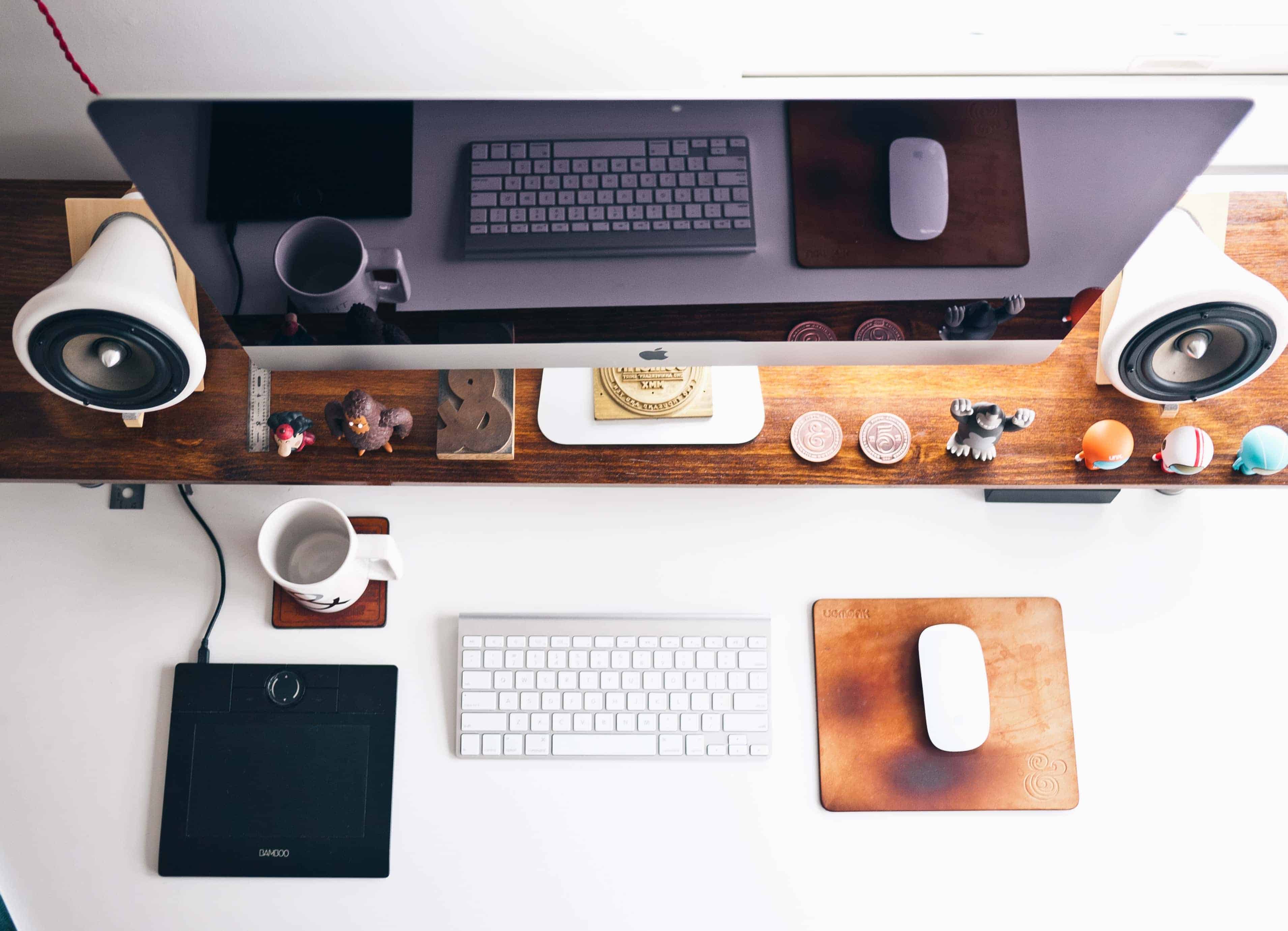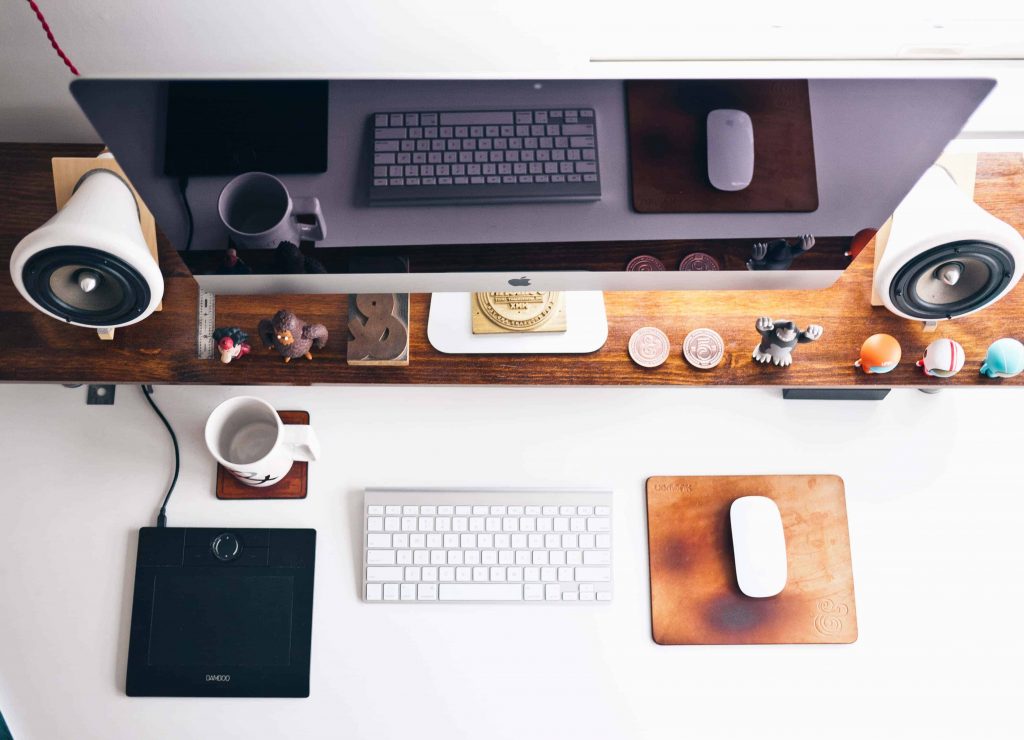Whether you’re working remotely or in an office, figuring out what makes you most productive, is crucial. Limiting distractions, creating a space for focus, and giving yourself and/or others around you space where they can work in comfort no matter their needs and preferences — these are key to a productive work environment, but creating such a balance is not as simple as might seem.
The physical workspace plays a vital role in making sure you can focus fully. Clutter on your desk or around your computer can cause anxiety, amplified by the realization that your lack of efficiency is costing you time.
It stands to reason, then, that taking ownership of your workspace and designing it according to your preferences can make a big impact on your work. After all, you’ll spend nearly six hours per day sitting at your desk if you’re like the average person.
Here are some tips to design your workspace for maximum productivity.
Movement (and Positioning) Is Key
It’s not uncommon to be struck by something commonly called “that 2 pm feeling”. Suddenly you’re drowsy, you lose focus frequently, and instead of concentrating on staying productive, you’re concentrating on staying awake.
One study by the athletic shoe company New Balance found that a large portion of their workforce reported that they had more energy the more activity they got throughout the day.
Ideally, this would mean taking breaks to get some exercise, but in a fast-paced environment, this isn’t always possible.
Instead, look for small opportunities to change position as you’re working if you can’t find time to go move around. A few options? One is an adjustable monitor, for example, the sleek design of this Humanscale Quickstand Eco Adjustable Workstation, with a variety of different orientations to meet your needs over the course of the day.
Another option is a standing desk, something that’s becoming more and more common in the modern office. Example? This Haworth Adjustable Desk offers durability and a range of different heights because when you’re looking to maximize productivity, optimal comfort isn’t something to sacrifice.
Leverage Ergonomic Design
Speaking of comfort, decades of research about human physiology has brought us to this point: a workspace that’s designed with your physical limitations in mind.
Ergonomic furniture may not always make sense — for example, who would’ve thought that this Humanscale Freedom backless saddle seat would be good for your spine? — but ergonomic chairs especially can save you a lot of pain and soreness after a long day of intense focus. A few other options are the Haworth Soji Task Desk Chair and the more upscale Haworth Fern Task Desk Chair.
Your seat isn’t the only place where ergonomic design can make an impact on your ability to focus and work long stretches without pain. Your keyboard and monitor orientation have a big effect themselves.
First, the keyboard. Even the smallest contortion in your wrists while using the computer for an extended period of time can make your job much more difficult than it needs to be. The problem is that everyone has different angles at which typing is the most comfortable. An adjustable foot under your keyboard can help line up your vision and prevent carpal tunnel: take these options from Humanscale, for example.
And what do dual monitors have to do with your physical comfort at work, you might ask? Follow along here: It’s well-documented that spreading out work over more than one screen can save time and money at work, but what about the toll it takes on your neck to strain to see one or both when they’re not set up right?
Something like this flexible, adjustable Knoll Sapper Double Adjustment Arm may be the exact tool to make you both productive and comfortable when you’re using a dual monitor setup.
Spark Joy in Your Workspace
To borrow a phrase from KonMari, ask yourself about the things in your office: does this spark joy? Often when people talk about designing your workspace for maximum productivity, we begin to feel like there’s no room for aesthetically pleasing objects because they’re seen as less “useful” than grey, utilitarian accessories.
Not only is this false, but studies have also shown that when you like looking at a space, it can unlock hidden potential for productivity. Opt for something that’s useful and attractive, like these modern desk lamps from Knoll.
Research has also found that incorporating biophilic design — the addition of green plant life (or at least design that resembles nature) — into the office can make workers perform better. On average, workspaces with designs inspired by nature create a workspace more conducive to productivity.
Personalize Your Workspace
Of course, studies aside, it all comes down to the ways in which you work best. If you’re focusing on the research without asking yourself, “what will make me the most productive?”, then you may not be striking the right balance in your workspace.
Add pictures of family members, pets, or anything else that you like to look at. Maybe you took some great photos on a particularly memorable vacation, or maybe you just like to keep your sports figurines on your desk. It’s important to make sure your workspace is personalized in a way that makes you feel at home.

And speaking of “at home”, there’s validity in being cozy at work also, though this may not be the first thing you think of. In Denmark, to compensate for the long, dark winters, people have embraced a sort of comfort-zen called “hygge”, which guides the theory that warmth and comfort accompany morale and better motivation at work.
It’s All About the Lighting
Have you ever noticed how the phrase “modern office” usually means light colors and lots of glass? This is no accident. Research has proven that people work better when there’s more natural light around them.
It may seem counterintuitive, but if you can’t get natural light into your workspace, it can benefit your ability to be productive if you get up and take a few minutes away from your desk, preferably in a well-lit area.
The Bottom Line
Of course, in reality, you may never be able to have complete control over the design of your workspace. You may be forced to work with what you have available to you, but here’s the upside. With the products and features out there to help support a workspace built for maximum productivity, your goals may be closer than they seem.
Ten articles before and after
5 Ways to Practice Mindfulness at Work
Shift Data Security: Keeping Your Information Safe
Tips for Building a Tech Stack for Success
Microsoft Teams vs Slack: Which is Right for Your Team?
How to Use the World’s Most Popular Emojis for Marketing
Top 5 Alternatives to WhatsApp Messenger
Auto-Hibernate: The Feature that Makes a Big Difference to Your Work
Announcing 82 New App Integrations: Apple Mail, Square, and More!
